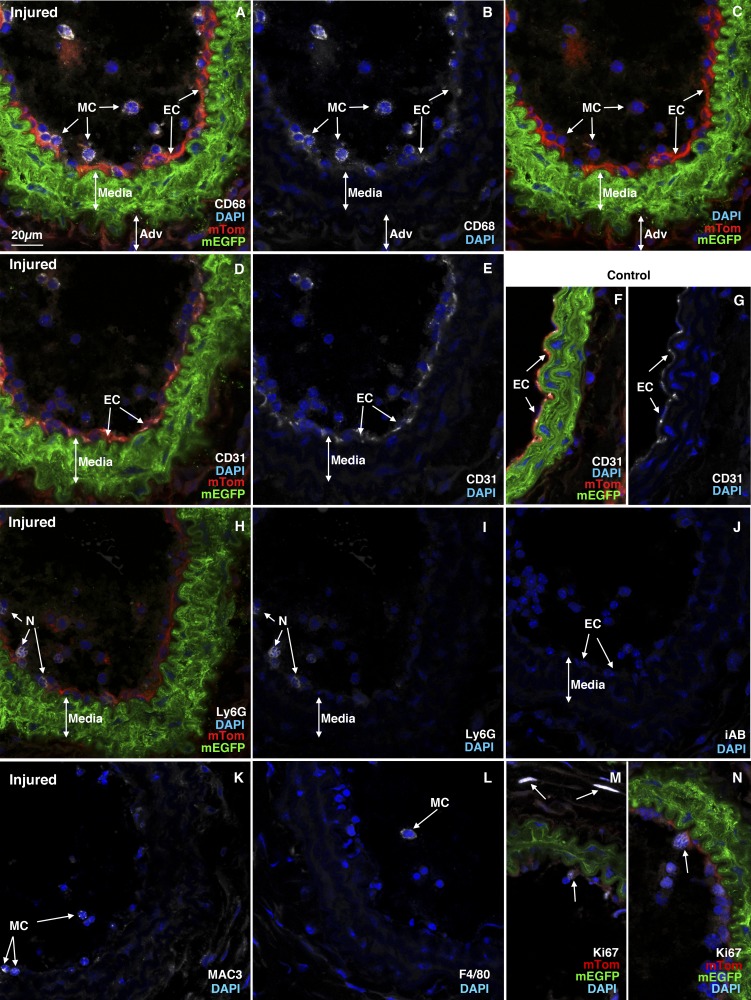Fig. 2.
Inflammatory cells are recruited into injured vessels. We treated 5 wk old male Myh11 creER(T2)−/+ mTmG−/+ mice with tamoxifen (1 mg ip) once a day for 5 days. Two weeks following the last tamoxifen injection the left carotid artery was ligated and tissues were harvested 3 days later. A–C: cryosection (8 µm) obtained from injured artery stained with antibodies to CD68. A: smooth muscle cells are visualized by their membrane localized green EGFP fluorescence. Other cell types are red due to expression of membrane localized Tomato. Nuclei were visualized with DAPI (blue) and CD68 expression visualized with Alexifluor 647 antibodies is indicated in white. B: white (CD68) and blue (DAPI) channels from the image shown in A. C: red (non-SMC), green (VSMC), and blue (DAPI) channels from the image shown in A. D–G: sections from injured (D, E) and contralateral control carotid arteries (F, G) stained with antibodies to CD31 to visualize endothelial cells (white), mEGFP-positive VSMC are green, mTomato positive non-VSMCs are red, and nuclei are blue (DAPI). E and G are blue (DAPI) and white (CD31) channels of the images shown in D and F, respectively. H, I: sections stained with Ly6G antibodies to detect neutrophils (white). J: parallel section reacted with antibodies to an irrelevant protein [HA epitope tag (Bethyl laboratories), white] showing no background white staining. K: section stained with Mac3 (white; only white and blue channels shown). L: section stained with F4/80 (white; only white and blue channels shown) M, N: sections from 2 different mice stained with antibodies to Ki67 to detect proliferating cells (white). All images are representative of data obtained from 3 animals and shown at the same magnification with the scale bar shown representing 20 µm. Adv, adventitia; mTom, membrane-localized Tomato; mEGFP, membrane-localized EGFP; MC, monocytes/macrophages; EC, endothelial cells; N, neutrophils; DAPI, 4',6-diamidino-2-phenylindole.

